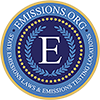Last updated on November 20th, 2017
Vermont Car Insurance – The state of Vermont requires that every vehicle registered with the state be covered with a variety of different types of insurance in order to be legally drivable on a public road. First and foremost Vermont requires that all vehicles be insured with a certain amount of liability insurance in case the driver of the vehicle is involved in an accident for which they are found to be at-fault. In the state of Vermont the at-fault driver in an accident is legally responsible for paying for all damages and injuries that occurred as a result of the accident. For this reason, the state requires liability coverage on every vehicle in order to make sure that every driver has the ability to pay for an accident if the need should arise. Without liability coverage the at-fault driver in an accident would be responsible for paying for the costs of an accident out of their own pocket, a financial burden which many Vermont motorists cannot afford to take on. In order for an insurance policy to meet Vermont State requirements it must include a minimum of $25,000 in bodily injury coverage for a single individual, $50,000 in bodily injury coverage for a single accident and $10,000 in property damage coverage. Bodily injury coverage is necessary because it will pay for the injuries of those involved in a car accident caused by the policy holder, though bodily injury liability coverage will not pay for any injuries to the policy holder or any passengers in the insured vehicle. If a Vermont resident wishes to have insurance coverage that covers their injuries as well as any injuries to their passengers in an at-fault accident they are free to purchase personal injury coverage for their auto insurance policy. Property damage liability coverage serves to pay for any property damage incurred by other drivers at the hands of the policy holder and like bodily injury coverage it cannot be used to pay for the property damage incurred by the policy holder or nay passengers in the insured vehicle at the time of the accident. The most common use of property damage liability coverage is to pay for the damage to other vehicles involved in an accident. Vermont motorists that wish to have insurance that will pay for the damage to their vehicles can purchase comprehensive and collision coverage. This type of coverage covers all type of damage to the insured vehicle including damage that was the result of an accident in which the policy holder was determined to be at fault.
In addition to liability coverage Vermont car insurance law also requires residents to purchase uninsured and underinsured motorist coverage for every vehicle that will be driven on state roads. Uninsured and underinsured motorist coverage is similar to bodily injury coverage in that it pays for many of the same things, including medical bills and wages lost due to injury. However, unlike bodily injury coverage uninsured and underinsured motorist coverage is meant to be used only when the policy holder is involved in a car accident and the at fault driver either has no coverage at all or doesn’t have enough coverage to pay for the injuries sustained by the policy holder and passengers in the insured vehicle. The minimum amount of uninsured and underinsured motorist coverage that a vehicle owner must have in Vermont currently sits at $25,000 for injuries to a single individual and $50,000 for all injuries resulting from a single accident.
Vermont State law requires that every resident needs to be able to provide proof of insurance upon request. Failure to provide this proof of insurance can result in a traffic citation, if it is an officer that is making the request, or denied access to certain government services, such as vehicle registration. Driving without insurance is against the law in the state of Vermont and those that are caught driving with no insurance face penalties that can be much more burdensome than the insurance premiums that the driver opted not to pay. A traffic citation for failure to provide proof of insurance in Vermont is typically accompanied by a $100 fine and possibly the suspension of the vehicle’s registration. If a policy holder allows their insurance to lapse they could have their registration suspended as well.
The only way a Vermont vehicle owner can legally avoid purchasing an insurance policy for their vehicle is to obtain a certificate of self-insurance. Evidence of self-insurance requires that the vehicle owner put down a $115,000 deposit with the Commissioner of Motor Vehicles as proof that they do have the financial resources to pay for any accident in which they are found to be at fault. Very few residents are able to provide proof of self insurance simply because the upfront cash required is more than the average person has on hand to waste.


